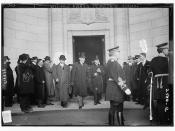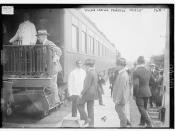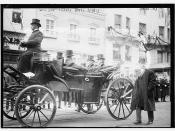Community Policing and the Broken Windows Theory
The idea of community based policing and the broken windows theory go
hand in hand in this new era of policing. Robert C. Trojanowicz, an early visionary who helped define the community policing movement, described community policing as "... a philosophy of full-service, personalized policing where the same officer patrols and works in the same area on a permanent basis, from a decentralized place, working in a proactive partnership with citizens to identify and solve problems" (Trojanowicz and Bucqueroux, 1994, 1). This helps promote mutual trust and cooperation between the community and the police officers, at the same time it helps empower neighborhoods in danger of being overwhelmed by crime, drugs, and the general fear of crime. The broken windows theory, a hypothesis created by James Q. Wilson and George L. Kelling in 1982, determined that if it appears as through no one cares then crime similar in nature will occur much more frequently and to a greater extent.
In their article, Wilson and Kelling said "the sense of mutual regard and the obligations of civility are lowered by actions that seem to signal that no one cares" (Wilson and Kelling, 1982, 15). In this paper, I will describe how Wilson and Kelling's theory
2.
has brought about a whole different way of thinking about how we police our communities and how community based policing puts their theory into action.
The thesis offered by Wilson and Kelling is that "we must return to our long-abandoned view that the police ought to protect communities as well as individuals" (Wilson and Kelling, 1982, 15). This view was probably lost during the reform era of government, which started in the 1900's to combat corruption, along with the move towards the professional image of police work, resulted...


